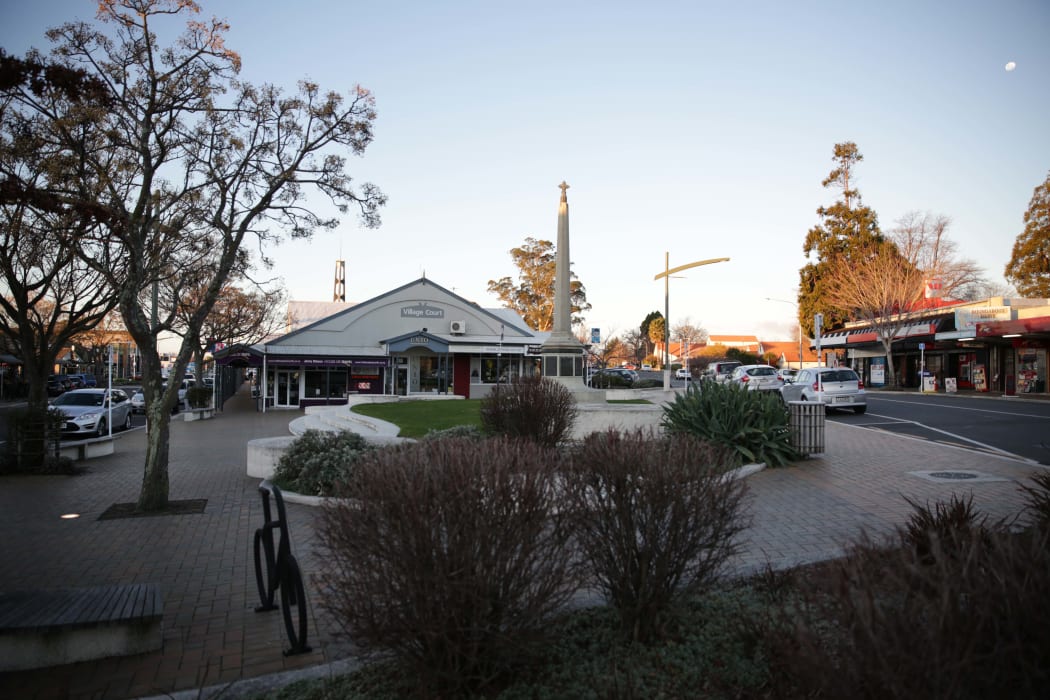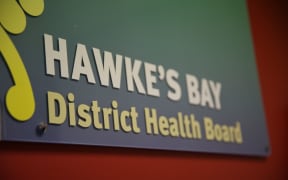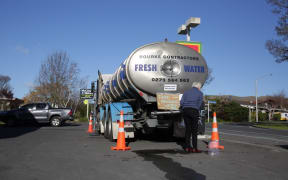An 89-year-old woman who died in Havelock North had contracted campylobacter, test results have confirmed.

Thousands of people in Havelock North have suffered gastric illness Photo: RNZ / Rebekah Parsons-King
An estimated 4100 people have suffered from gastric illness after the town's water supply was contaminated, and 17 people remain in hospital after falling sick with campylobacter in the North Island town.
The cause of the contaminated water supply was still unknown and the government announced yesterday it would hold its own independent inquiry.
Coroner Peter Ryan has opened an investigation to try to determine whether the infection contributed to the elderly woman's death.
He said at this stage it was not clear what effect, if any, it had on the 89-year-old's death.
Mr Ryan said he had been asked by Hawke's Bay Medical Officer of Health Dr Nick Jones to make the information public, in order to assure the public there was transparent reporting of any death associated in any way with the campylobacter outbreak.
District Health Board chief executive Kevin Snee said the case of the woman who died had been passed to the coroner, but she had other significant health issues and the campylobacter may be coincidental.
He had not spoken to the family, and the issue of whether an apology was called for would have to be reviewed, he said. Anything further than that was a matter for the coroner.
Dr Snee said while there were now estimated to be about 4100 cases, the number of new cases and pressure on the health system had fallen.
He said the hospital was working well, and had 17 patients, with two patients in ICU and no admissions to the emergency department since midnight.
"The outbreak of campylobacter is very much under control and is very much on the decline," he said.
A lot of the reason for the latest admission to the intensive care unit was to do with symptoms other than diarrhoea and vomiting, he said.
Further symptoms
Infectious disease specialist Dr Andrew Burns, who spoke at a news conference with Mr Snee, said there could be between about 10 and 40 people who presented a symptom of joint pain called reactive arthritis over the next few weeks.
A rare disorder, Guillain-Barré syndrome, was a possible later long-term effect of the bacteria.
That involved the body's immune system attacking parts of the nervous system, leading to weakness or tingling.
In the most severe cases, it could lead to symptoms resembling almost total paralysis.
"In preparation for that we have actually spent the past few days making sure that hospitals and health practices are aware," he said.
Dr Snee said medical staff had been briefed on the symptoms of any complications from the gastric bug.
"We are conscious that whilst the major health emergency that we've had for campylobacter is starting to decline there are potential unusual complications that can come about from it.
"We are making sure that our clinicians are properly briefed both in hospital and primary care about what to look for and how to manage those conditions and we're working closely with the Ministry of Health.
"It's just important that the public, if either you're not getting better from campylobacter or you start to become unwell again, that you get in touch with a GP or make contact with Healthline and bring it to our attention so it can be dealt with."
Dr Snee said it was hard to be sure how many cases the DHB would see due to the outbreak.
Dr Burns said the joint pain associated with reactive arthritis usually resolved over a few weeks or months and normally could be managed by GPs, however, a few cases they may need to access specialist treatment at hospital.
Timing of infection
Dr Snee said there had been many questions over the timing of the outbreak.
"There were quite a number of cases including my own son who appeared to have the condition that actually appear to have started before we might have expected.
"Cases certainly started by the 8th August so contamination would have been before then, and by Friday there were an increase in the number of cases, and a significant difference on the Saturday."
Medical officer of health David Sinclair said the actual contamination and infection could have started up to five days before the first reported cases displayed symptoms.
"Those first cases are people who have had a shorter incubation period, so you would be thinking exposure from maybe the 6th, 7th maybe the 5th."
Water tank refill after E coli scare
The latest tests of Hastings' and Flaxmere's water supply have shown there is no contamination and residents no longer needed to boil their drinking water.
The Hastings District Council said the area's water supply would still be chlorinated until further notice.
But the council said Havelock North residents must continue to boil water, although chlorination continued to be effective at keeping the water supply clear of contamination.
Hastings District Council also said tankers supplying water to Havelock North would be refilled this weekend.
The council said the tankers would be removed from their sites at 4pm today for re-sterilisation and refilling.
It emphasised that water used would come from a secure source and then be tested.
Hastings Mayor Lawrence Yule said residents would need to rely on boiling water from the town supply over the weekend.
"Safety has to be at the top of the list and I am in agreement that we do not deploy new fills of water back into the community without a complete lot of tests being run."
He said an E coli indicator found in one of the tankers yesterday turned out to be a false positive.
Boarding schools will receive bottled water from Hastings District Council for the weekend.






